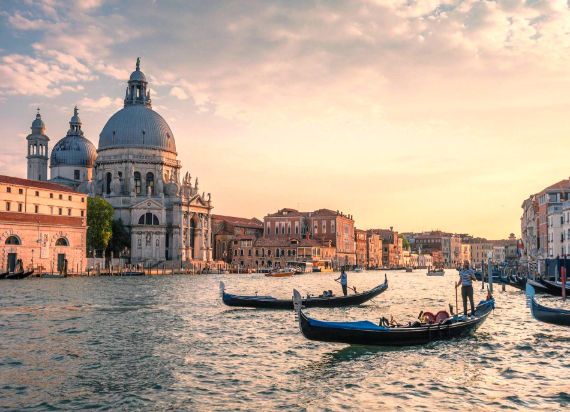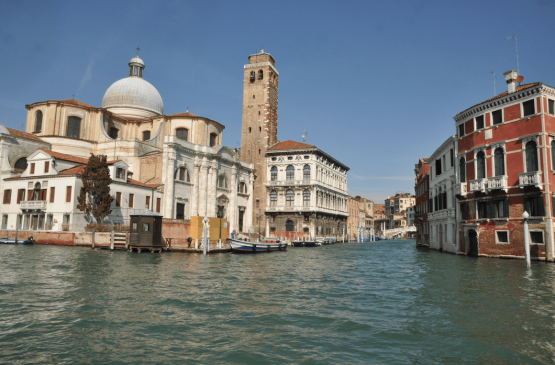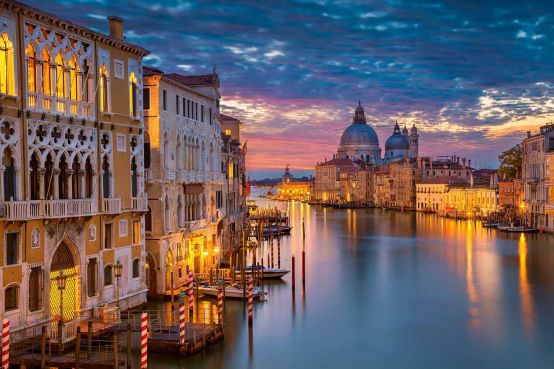Over the centuries and throughout the history of Venice, the city and the buildings of Venice have had to survive the constant challenge of rising tides and subsidence. As you walk around modern day Venice you cannot help but admire the ingenuity of the architecture and buildings of Venice that survived over the centuries.
Up until the beginning of the 9th Century, the majority of the buildings were modest two storey , lightly constructed to minimize subsidence and usually thatched with straw.
But, with the steady influx of settlers, the Islands of the Rialto that were flat, muddy and often waterlogged were neither large enough nor firm enough to accommodate Venice's ever-increasing population.
If Venice was to develop into a capital worthy of the growing republic, the land would have to be drained and strengthened, and wherever primitive methods of land reclamation made it possible - enlarged.
To provide support for new buildings in Venice, thousands of wooden pilings were driven into the mud, so close to each other that they touched, and then they were sawn-off at the tops to provide a flat solid surface. Many houses in Venice today, still stand on these piles sunk a 1,000 or more years ago.
This initial period of planned construction is still preserved in the basic shape of modern-day Venice. The pilings that still support the city are extremely delicate, and when repair work is done in Venice, the pilings have to be immediately covered as they would rot if exposed to the elements.
But, probably the most important element added to the landscape of Venice during this period was the building of a bastion along the eastern side of the city to protect it from the sea and invaders. This new wall gave the citizens a new feeling of community that helped begin to define a sense of cohesion and unity amongst its people.













